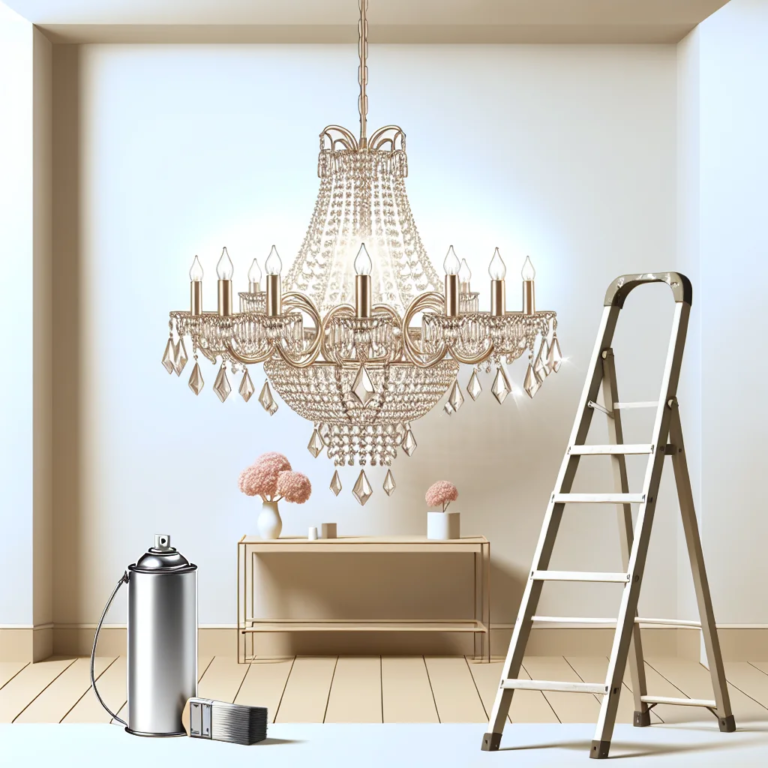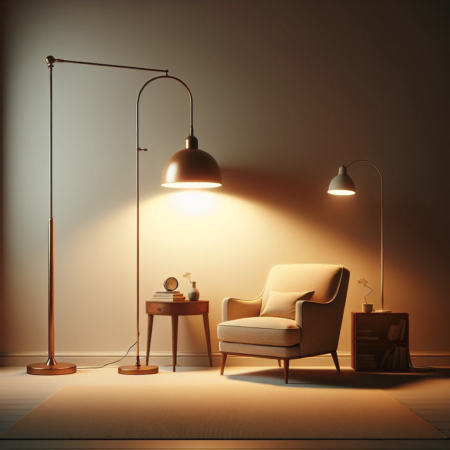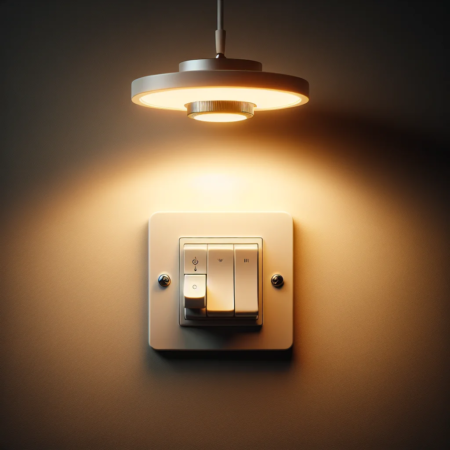Check out this Youtube video: Learn how to paint a vintage chandelier without losing its value and add a personal touch to your DIY lighting projects.

Contents
Choosing the Right Paint
As you embark on the journey of reviving your chandelier, selecting the appropriate type of paint is crucial to achieving a stunning finish that resonates with your design vision. For metal chandeliers, it is imperative to opt for a high-quality paint that is specifically formulated for the material. This is essential to ensure that the paint adheres properly and withstands the rigors of daily use. When dealing with wood chandeliers, it is equally important to select a paint that is tailored for wood surfaces to prevent peeling and ensure longevity.
List of recommended paint types and finishes for different chandelier materials
Metal Chandeliers
When painting metal chandeliers, it’s recommended to choose metal paint that offers durability and resistance to corrosion. Opt for finishes like brass, nickel, and wrought iron to achieve a classic or modern look. For a striking industrial aesthetic, black matte finish is an excellent choice.
Wood Chandeliers
For wood chandeliers, it is crucial to select wood-specific paint to accentuate the natural beauty of the material. Embrace finishes such as antique oak, mahogany, and walnut for an elegant and timeless appeal. Moreover, consider incorporating staining techniques to enhance the wood grain and create a luxurious finish.
By carefully considering the chandelier material and the appropriate type of paint and finishes, you can embark on a seamless painting journey that breathes new life into your cherished lighting fixture. Remember, investing in premium-quality paint tailored to your chandelier’s material is the cornerstone of achieving a remarkable and enduring transformation.
| Chandelier Material | Recommended Paint Types |
|---|---|
| Metal | Metal paint, Brass, Nickel, Wrought iron, Black matte finish |
| Wood | Wood-specific paint, Antique oak, Mahogany, Walnut, Staining techniques |
Preparing the Chandelier for Painting
Preparing a chandelier for painting involves disassembling the fixture, cleaning it with a suitable cleaner, and ensuring it is completely dry before inspecting the surface for any remaining dirt or grime. Then, prep the chandelier by covering areas not to be painted with painter’s tape, applying a primer if needed, and sanding the surface for better adhesion if required. Once the chandelier is thoroughly prepped, it will be ready for a flawless paint transformation to enhance your space.
Cleaning and prepping the chandelier surface
To begin the process of preparing a chandelier for painting, the utmost importance lies in thoroughly cleaning and prepping the surface to ensure the paint adheres properly and the final finish looks flawless. Here’s a step-by-step guide:
-
Disassemble the Chandelier: Carefully remove any glass or crystal pieces from the chandelier fixture using needle-nose pliers to ensure an easy and thorough painting process.
-
Cleaning the Chandelier: Use an appropriate cleaner based on the material of the chandelier. For glass chandeliers, a mixture of dish soap and warm water can be used for a sparkling finish. Meanwhile, for crystal chandeliers, a solution of white vinegar and water or isopropyl alcohol and water can work effectively.
-
Drying the Chandelier: After cleaning, it’s crucial to allow the chandelier to dry completely to avoid any water or cleaner residue interfering with the paint application.
-
Surface Inspection: Once the chandelier is dry, carefully examine the surface for any remaining dirt, dust, or grime. It’s essential to ensure that the surface is perfectly clean before proceeding with the painting process to achieve a durable and polished final look.
-
Prepping for Painting: After ensuring the surface is clean and dry, use painter’s tape to cover any areas that you don’t want to paint, such as sockets or specific decorative elements. This step ensures a precise and neat painting process, maintaining the chandelier’s decorative appeal.
-
Prime the Surface (if needed): Depending on the material and current finish of the chandelier, applying a primer suitable for the surface can enhance the adhesion and durability of the paint. This step is particularly crucial for metal chandeliers to prevent rust formation and ensure a smooth paint application.
-
Sand the Surface (if needed): For metal chandeliers, gently sanding the surface with fine-grit sandpaper can help create a smoother texture, promoting better paint adhesion and a professional-looking finish.
-
Final Inspection: Before proceeding to the painting stage, conduct a final inspection of the cleaned and prepped chandelier surface to address any overlooked imperfections and ensure that everything is ready for the painting process.
Upon completing these preparatory steps, your chandelier will be primed and ready for an exquisite paint transformation to complement your decor and elevate the ambiance of your space.

How to Paint Chandelier
To paint a chandelier, first thoroughly clean it using a mild detergent and an old toothbrush to ensure a pristine painting surface. Then, prepare the painting area by covering the floor with a drop cloth and protecting the surrounding area with painter’s tape and plastic sheeting. Next, apply a thin, even coat of metallic spray paint designed for metal surfaces, allowing sufficient time for drying based on the type of paint used, with oil-based paint requiring 6–8 hours to dry and latex paint drying in about 1 hour.
Is it important to clean the chandelier before painting? Yes, it is important to thoroughly clean the chandelier before painting to ensure proper adhesion of the paint and a pristine painting surface.
Is it necessary to allow the paint to dry completely before using the chandelier? Yes, it is vital to allow the paint to fully dry before using the chandelier to prevent damage to the freshly painted surface.
Step-by-step painting process
To paint a chandelier, you need to begin by thoroughly cleaning the chandelier to remove any dust, dirt, or grease that may hinder the adhesion of the paint. Wearing your gloves, clean the chandelier using an old toothbrush and mild detergent to ensure a pristine painting surface.
Preparation of the Painting Area
Prepare the painting area by covering the floor with a drop cloth to catch any paint drips. If the chandelier is still connected to the ceiling, ensure that the surrounding area is adequately protected from paint splatters with painter’s tape and plastic sheeting.
Applying the Paint
Once the chandelier is clean and the painting area is prepared, you can begin painting. Opt for metallic spray paint designed for use on metal surfaces.
Apply a thin, even coat of paint to the chandelier, ensuring complete coverage.
Allowing Time for Drying
After applying the paint, allow sufficient time for drying. Oil-based paint typically requires 6–8 hours to dry to the touch and is ready for a recoat in 24 hours.
On the other hand, latex paint is usually dry to the touch in about 1 hour and can be recoated in 4 hours. It is vital to exhibit patience by letting the paint fully dry before using the chandelier.
| Paint Type | Dry to Touch | Ready for Recoat |
|---|---|---|
| Oil-based | 6–8 hours | 24 hours |
| Latex | About 1 hour | 4 hours |
Ensuring Longevity and Safety
When it comes to maintaining the longevity and safety of a painted chandelier, there are several key tips that can significantly contribute to the preservation of its aesthetic appeal and structural integrity.
Tips for maintaining the painted chandelier
Regularly cleaning the painted chandelier is essential to prevent the accumulation of dust, dirt, and grime that can detract from its visual allure. To avoid damaging the painted finish, it is imperative to use a dry, soft cloth during the cleaning process.
For more stubborn stains or residues, using plain water or a mild detergent soap can be effective, ensuring a thorough yet gentle cleaning procedure.
In addition to cleaning, it’s crucial to inspect the chandelier periodically for any signs of wear, particularly focusing on areas where the paint may be chipped or scratched. Addressing these imperfections in a timely manner can prevent further deterioration and uphold the chandelier’s overall appearance.
Furthermore, consider the environment in which the chandelier is placed. Avoid exposing the painted surface to excessive humidity, extreme temperature fluctuations, or direct sunlight, as these conditions can accelerate the degradation of the paint and underlying materials.
Implementing appropriate environmental controls can significantly contribute to the chandelier’s longevity.
Another vital aspect of maintaining a painted chandelier is ensuring that it is handled and transported with care, especially during any reinstallation or relocation. Minimizing physical impact and implementing proper handling procedures can prevent unnecessary damage to the painted finish and structural components, ultimately extending the chandelier’s lifespan.
Recommendations for ensuring the durability and safety of the newly painted chandelier
To maximize the durability and safety of a newly painted chandelier, it’s essential to prioritize the use of high-quality paint that is specifically designed for the materials and surface texture of the fixture. By adhering to the manufacturer’s recommendations and utilizing premium paint products, the chandelier can withstand the test of time while retaining its visual appeal.
Moreover, considering the application method is crucial. Whether spray painting or hand-painting the chandelier, ensuring proper coverage and even application is fundamental to the durability of the paint finish.
Thoroughly following the designated curing and drying times is imperative to achieve a robust and resilient painted surface.
In order to further fortify the durability and safety of the painted chandelier, applying a clear protective coating, such as a suitable varnish or sealant, can provide an additional layer of defense against potential abrasions, fading, and environmental factors. This proactive measure serves to safeguard the paint and enhance the chandelier’s resistance to wear and tear.
It is also advisable to incorporate preventative measures to shield the chandelier during any painting or renovation activities in its vicinity. Utilizing protective covers or temporarily relocating the fixture can mitigate the risk of accidental paint splatters, dust accumulation, or other potential hazards that could compromise the integrity of the painted finish.
By implementing meticulous cleaning practices, conscientious environmental considerations, and strategic protective measures, as well as investing in high-quality materials and application methods, it is indeed possible to enhance the longevity and safety of a painted chandelier. These efforts contribute to the preservation of its aesthetic allure and structural robustness over an extended period, ensuring ongoing enjoyment and admiration of this exquisite lighting centerpiece.
| Maintenance Tips for Painted Chandelier |
|---|
| 1. Use a dry, soft cloth for regular cleaning |
| 2. Inspect for signs of wear and address promptly |
| 3. Avoid exposing to extreme environmental conditions |
| 4. Handle and transport with care during reinstallation |
| 5. Utilize high-quality paint designed for the chandelier material |
| 6. Ensure thorough and even application of paint |
| 7. Apply a clear protective coating for added resilience |
| 8. Implement protective measures during painting or renovation activities |





